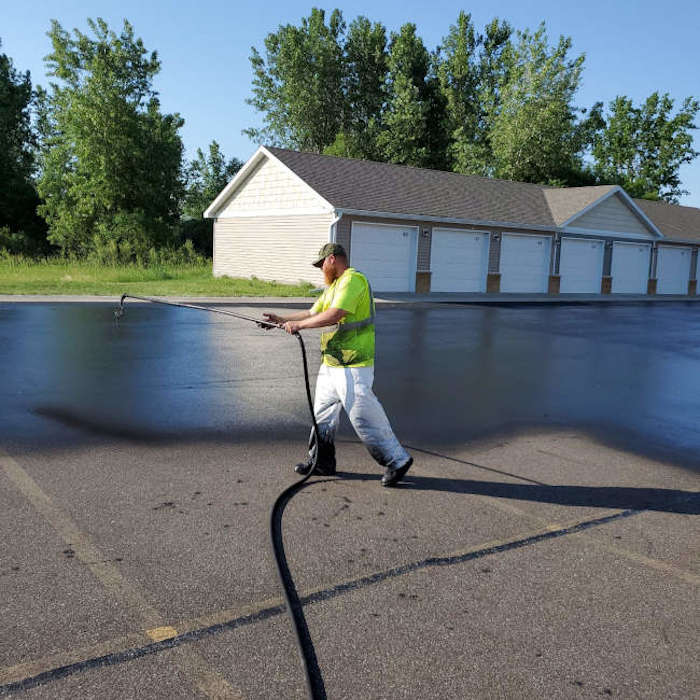Warm Mix Asphalt: A Lasting Solution for Sidewalk
Hot Mix Asphalt (HMA) has become a leading lasting option for sidewalk services, using a myriad of environmental benefits and ingenious technologies. Its ability to decrease and recycle materials energy consumption provides an engaging situation for its adoption in road construction projects. Furthermore, the long-term performance and durability of HMA make it a favored alternative for infrastructure development. As the need for environmentally friendly building techniques grows, discovering the nuances of HMA's sustainability can provide beneficial understandings right into the future of pavement services.
Ecological Advantages of Warm Mix Asphalt

Moreover, Hot Mix Asphalt helps to minimize city warmth island effects. Its dark shade absorbs sunlight, decreasing the quantity of warmth mirrored back right into the ambience compared to lighter-colored sidewalks. This can reduce ambient temperatures in city areas, decreasing the need for cooling and inevitably decreasing energy consumption.
In enhancement, Hot Mix Asphalt adds to enhanced stormwater administration. Its permeable nature allows water to recharge and infiltrate the sidewalk groundwater products, decreasing overflow and the threat of flooding. These environmental advantages make Warm Mix Asphalt a lasting selection for paving roads and freeways.
Energy Performance in HMA Manufacturing
Is power performance an important aspect in the production of Hot Mix Asphalt (HMA)? Absolutely. Energy plays a significant duty in the production of HMA, influencing both expense and environmental sustainability. One crucial element of power performance in HMA production is the usage of cozy mix asphalt (WMA) modern technologies (angled parking). WMA enables the blending and positioning of asphalt at reduced temperature levels compared to traditional warm mix asphalt, resulting in minimized power intake throughout manufacturing. This procedure not just lowers fuel use yet also reduces greenhouse gas exhausts, making it a much more eco-friendly option.
Additionally, advancements in plant modern technologies have resulted in more energy-efficient HMA manufacturing processes. Modern plants are made with functions like recycled asphalt pavement (RAP) handling capacities, efficient heater systems, and improved insulation, all contributing to power savings. By enhancing energy usage in HMA production, the market can decrease its carbon footprint while maintaining top notch sidewalk materials. Energy effectiveness is, as a result, a vital factor to consider in making sure the sustainability of Hot Mix Asphalt production.
Recyclability of Warm Mix Asphalt
The recyclability of Warm Mix Asphalt (HMA) site link is a crucial aspect of its sustainability and long-lasting ecological impact. HMA is among the most recycled materials in the USA, with over 100 million lots of redeemed asphalt pavement (RAP) being reused every year in new sidewalk building and construction. Recycling HMA offers a number of ecological advantages, such as lowering the need for virgin products, lowering power usage throughout manufacturing, and reducing the amount of waste sent out to land fills.
The procedure of recycling HMA entails crushing the existing pavement, crushing it into smaller sized pieces, and mixing it with new aggregate and asphalt binder to produce a recycled mix. In see post general, the recyclability of HMA plays a considerable function in advertising lasting practices within the sidewalk industry.

Long-Term Performance of HMA
Asphalt pavements show longevity and durability over an extensive period, showing the long-term efficiency of Warm Mix Asphalt (HMA) Additionally, advancements in HMA modern technology, such as the use of polymer-modified binders and cozy mix asphalt, have actually even more improved the durability and longevity of HMA pavements. By prioritizing high quality building and construction and upkeep practices, HMA proceeds to show itself as a cost-efficient and lasting solution for durable pavement infrastructure.

HMA: Toughness and Sustainability
Showing both durability and sustainability, Warm Mix Asphalt (HMA) has come to be a foundation in the construction of long-lasting sidewalk frameworks - angled parking. HMA's durability originates from its ability to withstand heavy loads, harsh climate problems, and high website traffic volumes, making it a reliable choice for roadways, freeways, and airport paths. The structure of HMA, which usually consists of accumulations, binder, and filler, plays a critical duty in boosting its longevity and resistance to damage
Additionally, HMA's sustainability hinges on its recyclability and energy-efficient production procedure. The capability to recycle redeemed asphalt sidewalk (RAP) in new HMA mixes reduces the demand for virgin materials and decreases the ecological influence of sidewalk construction and upkeep. Additionally, the energy performance of creating HMA exists in its lower mixing here are the findings temperatures compared to other sidewalk materials, leading to decreased power consumption and greenhouse gas emissions.
Final Thought
To conclude, hot mix asphalt (HMA) provides a lasting solution for pavement with its eco-friendly features. HMA's recyclability, power efficiency in manufacturing, and long-lasting durability make it an environment-friendly choice for roadway construction. By preserving natural deposits, reducing waste, and decreasing greenhouse gas exhausts, HMA plays a crucial function in advertising sustainability in facilities advancement. Its ability to mitigate metropolitan warmth island effects better emphasizes its value in developing eco mindful and resilient sidewalk systems.
HMA is one of the most recycled products in the United States, with over 100 million tons of redeemed asphalt sidewalk (RAP) being reused every year in brand-new sidewalk building.The process of recycling HMA entails milling the existing pavement, crushing it right into smaller sized items, and blending it with brand-new accumulation and asphalt binder to create a recycled mix.Asphalt sidewalks show sturdiness and strength over a prolonged duration, reflecting the lasting performance of Warm Mix Asphalt (HMA) In addition, innovations in HMA modern technology, such as the use of polymer-modified binders and warm mix asphalt, have actually additionally boosted the resilience and long life of HMA pavements. The capacity to recycle recovered asphalt sidewalk (RAP) in new HMA mixes lowers the demand for virgin materials and reduces the ecological effect of pavement building and construction and upkeep.